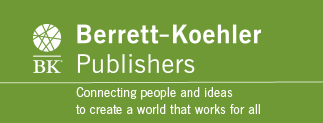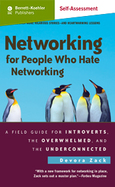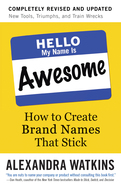Even if you don't have change management in your job description, your job involves change. Change is a given as modern organizations respond to market and technology advances, make improvements, and evolve practices to meet new challenges. This is not a simple process on any level. Often, there is no indisputable right answer, and responding requires trial and error, learning and unlearning. Whatever you choose to do, it will interact with existing policies and structures in unpredictable ways. And there is, quite simply, a natural human resistance to being told to change.
Rather than creating more rigorous preconceived plans or imposing change by decree, agile software developer turned organizational change expert Esther Derby offers change by attraction, an approach that is adaptive and responsive and engages people in learning, evolving, and owning the new way. She presents a set of seven heuristics—guides to problem-solving—that empower people to achieve outcomes within broad constraints using their personal ingenuity and creativity.
When you work by attraction, you give space and support for people to feel the loss that comes with change and help them see what is valuable about the future you propose. Resistance fades because people feel there is nothing to push against—only something they want to move toward. Derby's approach clears the fog to provide a new way forward that honors people and creates safety for change.
PRODUCT INFORMATION
Networking for People Who Hate Networking, an on-line assessment experience, is an instrument available in conjunction with the second edition of Devora Zack's Networking for People Who Hate Networking. This tool will help you assess your networking style. Networking enables you to accomplish the goals that are most important to you. But you can't adopt a style that goes against who you are—and you don't have to. As Zack writes, “You do not succeed by denying your natural temperament; you succeed by working with your strengths.”
Format: Online Subscription
Price: $9.95 for one-year subscription, or five tests, whichever comes first
Description: This instrument consists of 20 questions. The assessment will produce a graphic of your results and interpretation from the author. You can take the test up to five times within a 12-month period and compare your results.
Author’s welcome
First, I want to say I’m in awe of you. Presumably, you hate networking. Nevertheless, you decided to shell out a few clams to invest in an online self-assessment featuring this very topic. There’s a decent chance you’ve also read (aka skimmed) the companion book Networking for People Who Hate Networking 2.0. Way to go!
I’ll make it worth your while. Now let’s get down to it.
Why is Networking so Irksome?
No offense, but that isn’t the underlying question. Allow me to gently rephrase your query:
What is Real Networking vs the Phony Facsimile Posing as Networking?
Until the first edition of Networking for People Who Hate Networking surfaced, the universal concept of networking was along the lines of: more is more, constant contact, shameless self-promotion, and get out there ASAP.
As you have always suspected, this methodology backfires for approximately 85% of the population. These so-called techniques make most of us want to run and hide, crash and burn, declare an allergic reaction to networking and proclaim to hate it.
Good news! Working a room isn’t real networking. Shmoozing doesn’t equate with a successful, fulfilled life and career. Less is (gasp!) more.
What is commonly labeled ‘Networking’ is a misnomer.
Real networking is the art of building meaningful, lasting, mutually beneficial connections one person at a time.
Too many new companies and products have names that look like the results of a drunken Scrabble game (Xobni, Svbtle, Doostang). In this entertaining and engaging book, ace-naming consultant Alexandra Watkins explains how anyone—even noncreative types—can create memorable and effective brand names. No degree in linguistics required.
The heart of the book is Watkins's proven SMILE and SCRATCH Test. A great name makes you SMILE because it is Suggestive—evokes something about your brand; is Memorable—makes an association with the familiar; uses Imagery—aids memory through evocative visuals; has Legs—lends itself to a theme for extended mileage; and is Emotional—moves people.
A bad name, on the other hand, makes you SCRATCH your head because it is Spelling challenged—looks like a typo; is a Copycat—similar to competitors' names; is Restrictive—limits future growth; is Annoying—seems forced and frustrates customers; is Tame—feels flat, merely descriptive, and uninspired; suffers from the Curse of Knowledge—speaks only to insiders; and is Hard to pronounce—confuses and distances customers.
This 50 percent–new second edition has double the number of brainstorming tools and techniques, even more secrets and strategies to nab an available domain name, a brand-new chapter on how companies are using creative names around the office to add personality to everything from cafeterias to conference rooms, and much more.
—Todd C. Williams, President of eCameron, Inc., and author of Filling Execution Gaps and Rescue the Problem Project
Everyday Project Management provides the direction you need to apply project management's time-tested tools for keeping things on time and under budget. It introduces the wide variety of tasks you will have to tackle, including assembling a team, mapping out a plan, monitoring progress, keeping your team motivated, and using appropriate planning tools, such as project management software or wall charts. In addition, you'll gain a clearer picture of the project manager's role in the conception, planning, execution, control, and completion of a project.
Each chapter offers essential bite-sized nuggets of wisdom that will help you succeed, outlining the kinds of challenges you'll encounter, the interpersonal issues that will arise, and ways to stay on time and on budget in pursuit of the desired quality outcome. You'll learn how Gantt charts can keep your project on schedule, how the critical path method can be used to conserve resources, and how to juggle multiple projects, bosses, and reporting structures.
Whether you are managing one project or many, this quick and easy guide to the tasks, tools, and skills of project management will carry you from project launch to project completion. Most importantly, you will learn why having a work-life balance is vital to project managers who seek long and prosperous careers.
Project management requires you to navigate a maze of multiple and complex decisions that are an everyday part of the job. To be effective, you must know how to make rational choices with your projects, what processes can help to improve these choices, and what tools are available to help you with decision-making.
An entertaining and easy-to-read guide to a structured project decision-making process, Project Decisions will help you identify risks and perform basic quantitative and qualitative risk and decision analyses. Lev Virine and Michael Trumper use their understanding of basic human psychology to show you how to use event chain methodology, establish creative business environments, and estimate project time and costs. Each phase of the process is described in detail, including a review of both its psychological aspects and quantitative methods.
For over twenty years, Creating an Environment for Successful Projects has been a staple for upper managers who want to help projects succeed. This new edition includes case studies from companies that have successfully applied the approach, along with practical tools such as templates, surveys, and benchmark reports for savvy leaders who want to ensure project success throughout their organizations. The insights in this book will help management speed projects along instead of getting in their way. All too often, well-intentioned managers put roadblocks in the team's way instead of empowering them with the tools they need to succeed. This approach to project environments, grounded in decades of research and practice, will help you make your organization the most project-friendly it's ever been.
Organizational changes rarely work unless upper management is heavily involved. Although project managers are most closely responsible for the success of projects, upper managers are the ones who ultimately create an environment that supports those projects. The way upper managers define, structure, and act toward projects has an important effect on the success or failure of those projects and, consequently, the success or failure of the organization. This book helps all managers understand the need for project management changes and shows how to develop project management as an organizational practice.
















